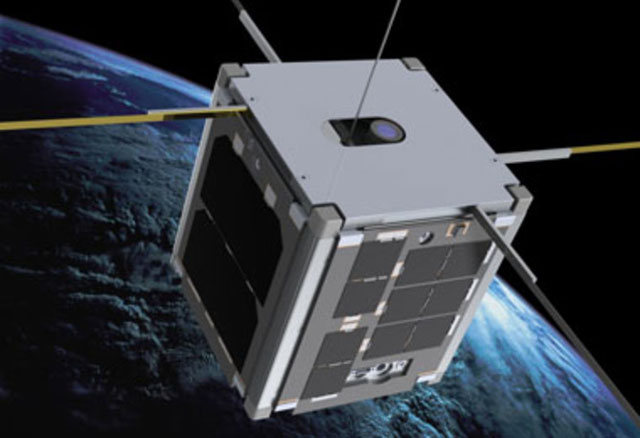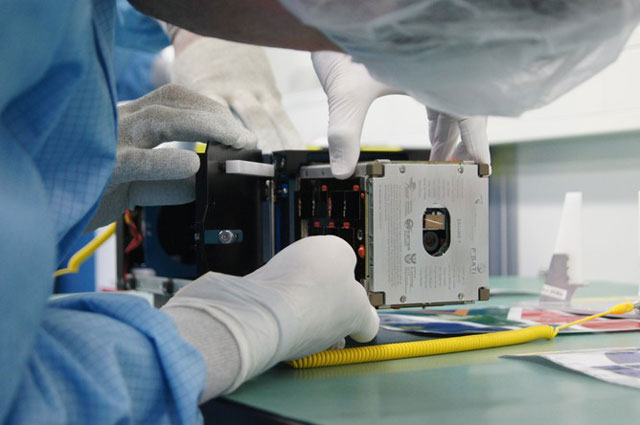
A tiny cube, slightly smaller than a loaf of bread, is the new manna to heaven, as the number of nanosatellites being hurled into orbit is increasing substantially.
Nanosatellites are small satellites weighing between 1kg and 10kg. CubeSats are box-shaped versions of nanosatellites. They are very light compared to traditional satellites, which can weigh anything up to a few tons.
Pretty much in the vein of mobile phone handsets, satellites have also become smaller and better. They cost less but have the capability of bigger satellites of the past.
In their short existence, nanosatellites have seen a remarkable uptake globally among universities and recent business start-ups. The exciting era of nanosatellites has begun.
Since 2000, more than 300 CubeSats have been launched, of which American start-up Planet Labs accounts for a third. It is expected that up to 3 000 nano- and micro-satellites will be launched over the next five years.
While the cost of a big satellite can run into hundreds of millions of dollars, a CubeSat can be built for around US$100 000 and launched for much the same, depending on the complexity of the mission.
For this reason, CubeSats were initially used to train students for the aerospace industry. But now these small spacecraft can even be used to track and trace vessels at sea, or aircraft.
Being low cost, multiple nanosatellites can be launched into low-Earth orbit. The satellites in these constellations pass over a specific geographic area more frequently than single, big-satellite missions.
This makes it possible for nanosatellites to be used for rapid responses to disasters, or to gather timely information relating to telemedicine, environmental management and asset tracking. They will soon even reach to other planets.
With so many satellites big and small in orbit there is the possibility (still extremely small) of collision with pieces of used rockets and defunct satellites floating about. But even tiny pieces of space debris are tracked with radar and potential collisions can be predicted and avoided with appropriate technologies.
This has inspired cutting-edge research and innovation, for example, to make sure nanosatellites de-orbit (return to the atmosphere and burn out) when they reach the end of their lives.
Combined with evolving national and international regulatory frameworks, future generations will continue to benefit from this resource.
Africa’s first cool cube
On 21 November 2013, South Africa made history by becoming the first African country to launch its own CubeSat TshepisoSAT into space.
The satellite was developed by students and staff from the French South African Institute of Technology at CPUT with funding from the department of science & technology and the National Research Foundation.
TshepisoSAT was the first in a series of CubeSats that will study the ionosphere above Africa in collaboration with scientists of the South African National Space Agency, and others on the continent.
The university has also pioneered the International African CubeSat Workshop series, a growing networking forum for colleagues on the continent. The partnership between academia, government and industry together with adopting CubeSats for a hands-on learning experience provide a blueprint for creating similar nodes elsewhere in Africa.
Nanosatellites support the African Union’s science and technology ambitions which it believes could reap massive benefits for the continent.

The African Union Science, Technology and Innovation Strategy for Africa — 2024 (STISA-2024) has six priorities, at the heart of which is the pursuit of space-based applications supported by an indigenous satellite industry. The priorities include putting an end to hunger, bringing about food security and preventing and controlling diseases.
But establishing a sustainable African space industry faces a number of challenges, notably that of funding. Furthermore, young people are generally not rushing to take up careers in science, technology, engineering and mathematics.
Capacity building for the space industry is constrained by the high cost of traditional satellites and supporting infrastructure compared to other technologies.
CubeSats are, however, winning over the youth to the space sector. From being cheaper to build and launch into space, they provide a cost-effective platform for training and research, especially for countries where heavy investment in a space industry has to be weighed against more immediate needs such as health and welfare.
Combining the vibrant ingenuity and creativity of this generation with an equally ingenious and cool space technology can no doubt have a profoundly positive socioeconomic impact on Africa.
Democratising space
Africa is steadily moving towards a coherent space programme and nanosatellites should be part of this broader strategy.
Pan-African constellations of nanosatellites can be developed in partnerships with existing communities of excellence in science, engineering and mathematics on the continent.
By ensuring that Africa produces its own engineers and scientists, and by playing our part on the global stage, the continent will have taken another step towards the democratisation of space for its people.![]()
- Robert van Zyl is director, satellite systems engineering at the Cape Peninsula University of Technology
- This article was originally published on The Conversation

